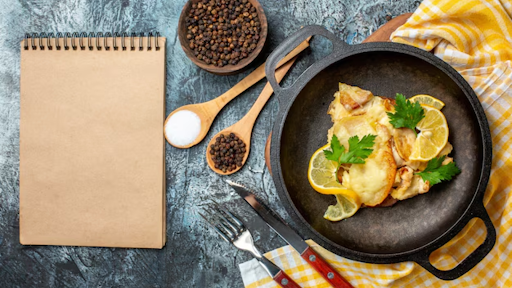How Long Does It Take to Finalize a New Food Recipe?

Strong 8k brings an ultra-HD IPTV experience to your living room and your pocket.
Creating a new recipe isn’t just about combining ingredients. It’s a thoughtful process that includes testing, adjusting, and refining until the final dish is just right. Whether you're planning a product for market or simply designing a fresh addition to a menu, the journey takes patience. So, how long does it really take? That depends on your goals, resources, and how complex your creation is.
In most food recipe development projects, time isn’t just spent cooking. There’s planning, sourcing, tasting, tweaking, and sometimes scaling for larger batches. While some recipes may come together in a week, others—especially those for packaged foods—may take weeks or even months to perfect.
Let’s explore what goes into the development timeline and why each step matters in creating something that’s both delicious and repeatable.
Start with the Idea
Every new recipe begins with a clear concept. You need to know what you’re aiming for before you can test anything.
Clarify early:
- What kind of dish or product is it?
- Who is the recipe for—families, foodies, or commercial buyers?
- Are there dietary goals (vegan, gluten-free, low sugar)?
- What’s the price point or ingredient cost range?
Once you define these things, you can choose your ingredients wisely and avoid wasting time on revisions later.
Ingredient Sourcing
Before the first test, you need to gather ingredients—and they must match your final vision. This step may seem simple but often takes longer than expected, especially if you're sourcing specialty items or local produce.
Keep in mind:
- Availability affects consistency
- Suppliers may influence flavor or texture
- Cost matters, especially for scaled recipes
At this stage in food recipe development, you’re making sure your recipe is not only tasty but realistic.
The First Trial
Now comes the cooking. The first batch is usually just a draft. It helps bring the concept to life and show what works—and what doesn’t.
Common adjustments after round one:
- Tweaking seasoning levels
- Changing cook time or temperature
- Re balancing wet and dry ingredients
- Improving texture or appearance
You may need to go through multiple tests before you’re happy with the result. This step alone can take a few days or several weeks, depending on the complexity of the dish.
Sensory Testing and Feedback
Once you have a version you like, it’s time to get other opinions. Share the dish with testers and ask for honest feedback.
Focus on:
- Taste and flavor balance
- Texture and mouthfeel
- Appearance and presentation
- Portion size
This round may lead to small but important tweaks. It’s a critical part of making sure the final product resonates with its intended audience.
Nutritional Review and Adjustments
If your recipe will be packaged or labeled, it must meet certain nutritional or dietary guidelines. This step often includes sending your recipe to a lab for testing.
Adjustments may include:
- Lowering sugar or sodium
- Adding fiber or protein
- Adjusting serving size
In food recipe development, small changes in ingredients can cause big shifts in nutritional values—so testing and adjustments must be accurate.
Scaling the Recipe
If your dish is meant for commercial production, restaurant service, or catering, you’ll need to scale it. That means turning your test-size batch into a larger recipe without losing quality or consistency.
Challenges include:
- Maintaining texture in bigger portions
- Avoiding ingredient separation
- Ensuring cooking times remain appropriate
- Cost analysis per unit
Scaling can take additional rounds of testing, especially if equipment or temperature settings differ.
Finalizing the Recipe
Once you’ve passed all testing phases, adjusted for feedback, and scaled your recipe, you’ll lock in the final version. It’s time to document everything clearly.
Include:
- Accurate measurements and methods
- Cooking or holding temperatures
- Storage instructions (for shelf-stable or frozen items)
- Any prep notes for the user
This finalized recipe becomes your “master” version—ready for production, packaging, or presentation.
So, How Long Does It Really Take?
There’s no single answer, but here’s a rough estimate:
- Simple home or menu recipes: 1–2 weeks
- Small-batch products or retail items: 3–6 weeks
- Commercial-ready or packaged recipes: 2–3 months
Each phase of food recipe development builds on the last, and skipping steps often leads to setbacks later. So it’s worth investing time upfront to get the outcome you want.
The next time you're eager to create something new, remember: a well-developed recipe isn’t rushed—it’s refined. And when done right, it’s worth every day spent making it better.
Note: IndiBlogHub features both user-submitted and editorial content. We do not verify third-party contributions. Read our Disclaimer and Privacy Policyfor details.


